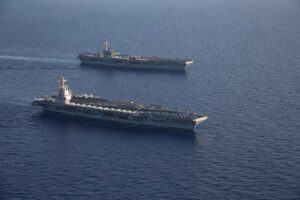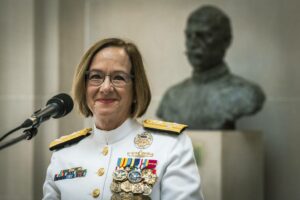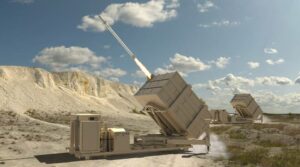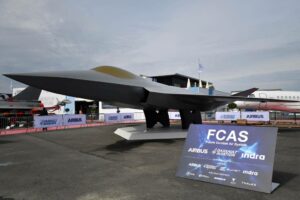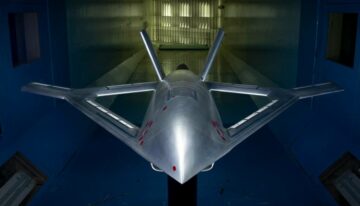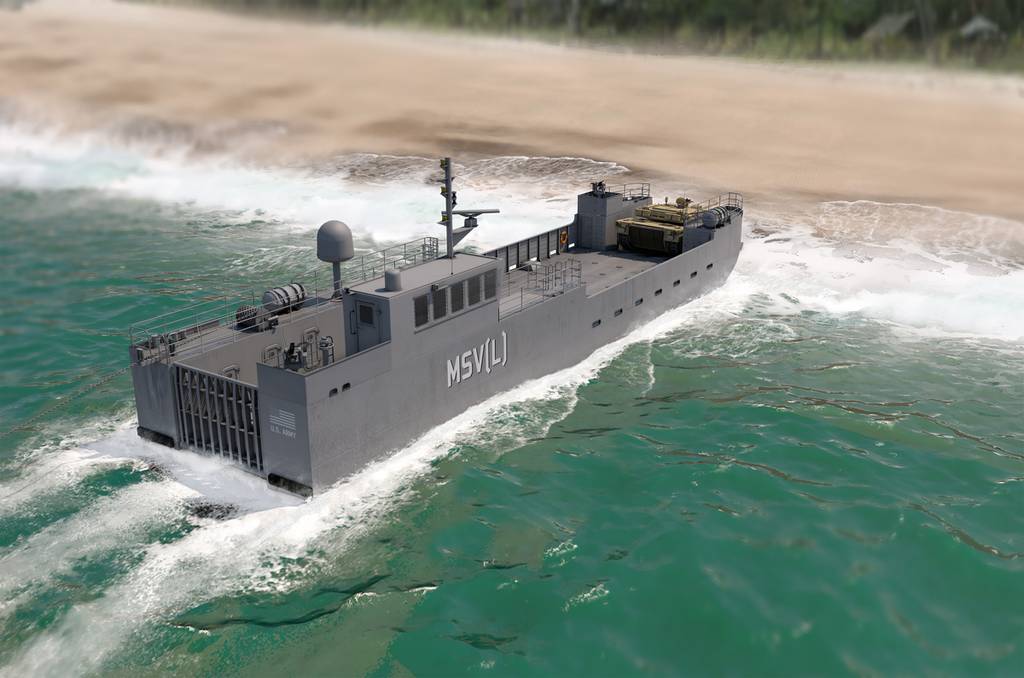
WASHINGTON — The U.S. Army will focus on developing watercraft, power-generation capabilities and a more effective command-and-control network as part of its newly formed modernization team meant to ease the movement of equipment, weapons and people in challenging environments, according to the service’s undersecretary.
While he wouldn’t go into detail about who will lead the new cross-functional team focused on contested logistics, Gabe Camarillo told reporters at an Association of the U.S. Army breakfast on Tuesday that it would prioritize modernization in key areas needed to operate in the Indo-Pacific region.
“You’re thinking about everything from intra-theater lift requirements and everything we’re doing on watercraft to our ability to provide refueling, water, electrical power,” he said.
“Some requirements have been on the shelf for quite some time,” Camarillo added, but the team will try to bring them “into the 21st century.”
Additionally, the team will likely focus on enhancing command-and-control capabilities, he said.
The Contested Logistics Cross-Functional Team will be the first of its kind set up since the inception of Army Futures Command. That organization, established in 2018 to tackle Army modernization requirements, created eight signature cross-functional teams. The service tasked each with advancing one of the six modernization priorities, or a capability considered to cut across a number of those.
The focus areas for contested logistics align with what the head of Pacific-based 8th Theater Sustainment Command, Brig. Gen. Jered Helwig, told Defense News last month. In particular, the commander said he wants a better common operating picture “from factory to foxhole” across the logistics tail.
That common operating picture should be joint, Helwig stressed. “I know that I’ll spend more time resupplying the Air Force and the Navy than we will the Army, at least at some phase of the operation, so we need to ensure that we build something that they can use as much as we can.”
Army Materiel Command chief Gen. Charles Hamilton told Defense News in a separate interview last month he wants to establish better “real-time” information on the state of equipment and weapons in the field.
“How it works now is when something happens at the tactical end today, it doesn’t inform the strategic end. It could take a day, or it could take a couple of days, for the information to allow me to react to it,” Hamilton said. “The must-do is when it happens at the tactical end; it’s got to inform a decision at my end.”
Helwig also said the Army needs new watercraft. The service recently experimented with that capability at its Project Convergence experiment last fall.
“We learned a lot about what watercraft can do, but more importantly what they can’t do right now in terms of the age of the fleet,” Helwig noted.
Army Futures Command representatives plan to attend some upcoming exercises to better refine capabilities they want to pursue within the new cross-functional team.
The Army has not embarked on a new watercraft program since the mid-1990s, “so it’s a pivotal time for Army watercraft,” Brig. Gen. Luke Peterson, program executive officer for combat support and combat service support, told Defense News in an interview last fall.
The service hit an important milestone on Oct. 10, 2022, when it put its first new prototype of the Maneuver Support Vessel (Light) into the water in Portland, Oregon.
The Army is also performing service-life extension programs on its Landing Craft Utility vessels used to transport equipment and troops to shore as well as on its Modular Causeway Systems, a bridging capability connecting a ship and a dock.
The service is also working on a Maneuver Support Vessel (Heavy) requirement and a draft document laying out capability development plans.
Jen Judson is an award-winning journalist covering land warfare for Defense News. She has also worked for Politico and Inside Defense. She holds a Master of Science degree in journalism from Boston University and a Bachelor of Arts degree from Kenyon College.
- SEO Powered Content & PR Distribution. Get Amplified Today.
- Platoblockchain. Web3 Metaverse Intelligence. Knowledge Amplified. Access Here.
- Source: https://www.defensenews.com/land/2023/04/11/us-army-official-reveals-watercraft-networks-as-logistics-focus-areas/
- :is
- $UP
- 10
- 2018
- 2022
- 70
- 8
- a
- ability
- About
- According
- across
- added
- AIR
- Air Force
- and
- areas
- Army
- Arts
- AS
- Association
- At
- attend
- award-winning
- BE
- Better
- boston
- Boston University
- Breakfast
- bridging
- bring
- build
- CAN
- capabilities
- Century
- challenging
- Charles
- chief
- College
- combat
- Common
- Connecting
- considered
- Convergence
- could
- Couple
- covering
- craft
- created
- cross-functional teams
- Cut
- day
- Days
- decision
- Defense
- Degree
- detail
- developing
- Development
- Dock
- document
- Doesn’t
- doing
- draft
- each
- Effective
- enhancing
- ensure
- environments
- equipment
- establish
- established
- everything
- executive
- Executive Officer
- experiment
- extension
- factory
- Fall
- field
- First
- FLEET
- Focus
- focused
- For
- Force
- formed
- from
- Futures
- Gen
- Go
- Hamilton
- happens
- Have
- head
- heavy
- Hit
- holds
- HTTPS
- I’LL
- images
- important
- in
- inception
- inform
- information
- Interview
- IT
- ITS
- joint
- journalism
- journalist
- jpg
- Key
- Key Areas
- Kind
- Know
- Land
- landing
- Last
- lead
- learned
- light
- likely
- logistics
- Lot
- master
- milestone
- modernization
- modular
- Month
- more
- movement
- Need
- needed
- needs
- network
- networks
- New
- news
- noted
- number
- Oct
- of
- Officer
- official
- on
- ONE
- operate
- operating
- operation
- Oregon
- organization
- part
- particular
- performing
- Peterson
- phase
- picture
- pivotal
- plan
- plans
- plato
- Plato Data Intelligence
- PlatoData
- Portland
- Prioritize
- Program
- Programs
- prototype
- provide
- pursue
- put
- React
- recently
- refine
- Refueling
- region
- Representatives
- requirement
- Requirements
- Reveals
- s
- Said
- Science
- separate
- service
- set
- Shelf
- should
- since
- SIX
- So
- some
- something
- spend
- State
- Strategic
- support
- Systems
- tactical
- Take
- team
- teams
- terms
- that
- The
- the information
- The State
- Theater
- Them
- Thinking
- time
- to
- today
- transport
- Tuesday
- u.s.
- university
- upcoming
- us
- us army
- use
- utility
- Vessel
- Water
- Weapons
- WELL
- What
- WHO
- will
- with
- within
- worked
- working
- works
- would
- zephyrnet

